BrainWise: Neuroscience for Nonscientists
Posted On: August 4, 2021Medical books and journals once were the only place to find images of the brain. As science and technology have advanced, photos capturing the brain’s complexities are now available to nonscientists through newspapers, magazines, the Internet and books like Seymour Simon’s The Brain.


Image of real brain picture used by a classroom teacher. The picture shows how her student marked the sections on the real brain image and and drew lines showing the brain connections they made after learning the 10 Wise Ways.
The second image shows the lines the student drew on the brain worksheet in the Grades 6-12 curriculum.
BrainWise instructors can take advantage of this visual tool.The program has always taught the brain’s scientific terms alongside the descriptive names BrainWise uses for the same parts. This has advantages, as children and adults are intrigued by the brain and motivated to learn about it. Their interest becomes a foundation to learn ways their brains can help them stop and think. And while they appreciate being told the scientific names, most prefer to use “Wizard Brain,” “Lizard Brain, ” and “Relay Center.” Youth counselor and coach Jason Wilson praises this approach. “None of my students or their families have seen pictures of the brain and no one talks to them about it, so they find it fascinating.” He talked about race and said that BrainWise materials are appealing because “brains aren’t black or white.” He said that when students relate to the materials, “they are more prone to use them.” (Issue 61 BrainWise is a Game Changer) Other BrainWise instructors agree. They praise the universal nature of the 10 Wise Ways and their appeal to participants across ages, race, sex, culture, and learning abilities.
Sources for Brain Images
Here are some online sources for copyright free materials provided by Mary Cazzell , Ph.D., R.N., Director of Nursing Research and Evidence Based Program at Cook Children’s Medical Center in Fort Worth. A big thank you to Mary and her team for sharing these resources!
Here is another source for brain images, but it charges a fee https://www.sciencephoto.
Neuroaesthetics and BrainWise Artists
The International Arts and Mind Lab of the Brain Science Institute at Johns Hopkins University School of Medicine is pioneering how arts benefit the brain.
Neuroaesthetics is the study of how art and your environment affect your brain, and research shows the positive neurological impact art therapy has on patients.These findings can be applied to education, too! BrainWise has always encouraged art as a teaching tool, and it is exciting to have this validation. BrainWise instructors have found that asking students to draw their own version of the brain is a fun and helpful way to help them remember brain parts. Drawing pictures, making Jello Brains, creating yarn brains, and making Brain hats are other creative ways to reinforce the Wizard Brain, Lizard Brain, and Relay Center. The process rewards them and reinforces that they are learning skills to stop and think.
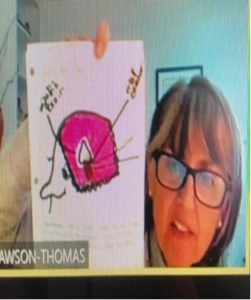
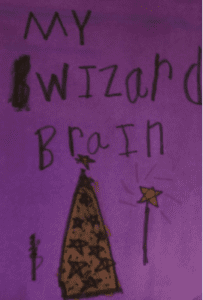
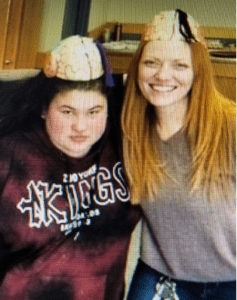
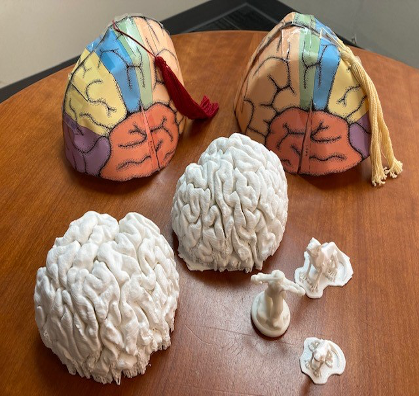
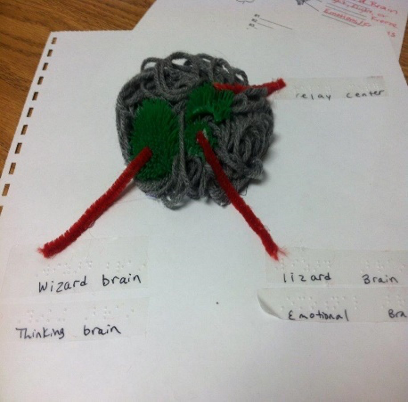
Another art project uses the 10 Wise Ways cards that come with the curriculum. Instructors have students draw their own set of cards on index cards or other heavy paper. The cards are used for a wide range of activities, from playing games to conversation starters. For example, teachers, counsellors, mentors, and parents will ask a child to choose a card (or cards) and talk about what is going on and why that card is meaningful.

BrainWise teaches non-scientists of all ages and abilities about the brain. We have found that using scientific terms alongside BrainWise terms to describe basic brain parts has been a breakthrough teaching tool. Children like to feel smart, teenagers are excited to teach the skills to others, and counselors like Jason Wilson appreciate being able to provide students and families with the correct brain terminology that supports the Ten Wise Ways. The combination of neuroscience and arts — drawing brains and pictures of the 10 Wise Ways, identifying Wise Ways in stories and movies, using role-plays to act out a lesson – reinforces how thinking skills can prevent and solve problems. Visual arts strengthen the individual’s understanding of the brain, and many graduates use their personalized brain pictures to teach family members and friends about their skills.
On a Lighter Note
Ode to the BrainIn the following short video, Carl Sagan, Bill Nye, Oliver Sacks, Jill Bolten and other renowned scientists musically extol the wonders of the brain. It features clips from Carl Sagan’s Cosmos, BBC’s The Human Body, Discovery Channel’s Human Body: Pushing the Limits and various TED Talks.
 |
| Ode to the Brain! by Symphony of Science |